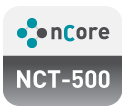 CUDA Spotlight: Ian Lintault By Calisa Cole, posted March 7, 2013 GPUs for High-Performance Embedded SystemsThis week's Spotlight is on Ian Lintault, Managing Director at nCore Design. Ian and his team deliver solutions based on parallel technologies across many areas, including earth and space exploration, medical, industrial, national security, and the financial and consumer markets. This interview is part of the CUDA Spotlight Series. Q & A with Ian LintaultNVIDIA: How does nCore Design use GPU computing to solve customer problems? For example, a UAV (unmanned aerial vehicle) has various types of sensors attached to it that allow it to navigate, collect image data, scan the radio spectrum, perform pattern analysis, etc. This results in a virtual onslaught of data that must be processed in a time-critical fashion. If the system design is carefully executed, it’s possible to perform very complex data transformation and computation directly on-board, giving the vehicle some “smarts” and reducing the amount of data that must travel back to the control station via radio-links. Some systems use FPGAs to perform these tasks. However, the GPU and its associated languages and tools allow system designers to get further, faster without lengthy development cycles and expensive platforms. One can easily get started by using the GPU in a development laptop or desktop. NVIDIA: What are other examples of projects you are working on? Additionally, we recently started an internal project to take the Mantevo Benchmark codes from Sandia National Labs and, using OpenACC, port them to a variety of embedded platforms, chief among them NVIDIA GPUs. These codes are an excellent cross-section of Molecular Dynamics, Finite Element Analysis and Lagrangian-Eulerian hydrodynamics benchmarks that can be used to predict the performance of actual applications on new hardware. They are fairly compact and make use of MPI, OpenMP and pThreads, thus providing portable and repeatable results. Our intention is use them to benchmark proprietary customer systems. NVIDIA: Why is this important? NVIDIA: What types of training do you provide? Our latest course, developed in conjunction with PGI, teaches people how to unlock significant performance increases in their code by exposing them to the ins and outs of programming with OpenACC. nCore's NCT-500 course covers concepts and approaches NVIDIA: Who is the target market for your OpenACC course? OpenACC is an efficient way to put the GPU's power at their disposal without having to dedicate significant portions of their time to learning a new language. We offer training in both CUDA and OpenACC and can help people determine which approach is optimal for their project. Bio for Ian LintaultIan Lintault is Managing Director at nCore Design. He and his team deliver solutions based on state-of-the-art parallel technologies using specialized knowledge of applied software optimization techniques on modern embedded computing platforms. nCore Design is a global provider of professional services focused on multicore and manycore computing platforms. The company has delivered over ten man-years of manycore and multicore training since 2007. Relevant LinksnCore HPEC: http://www.ncoredesign.com/embedded_HPC/nCore Training: http://www.ncoredesign.com/training/ Contact Infoinfo (at) ncoredesign (dot) com+1-971-228-0700 |
